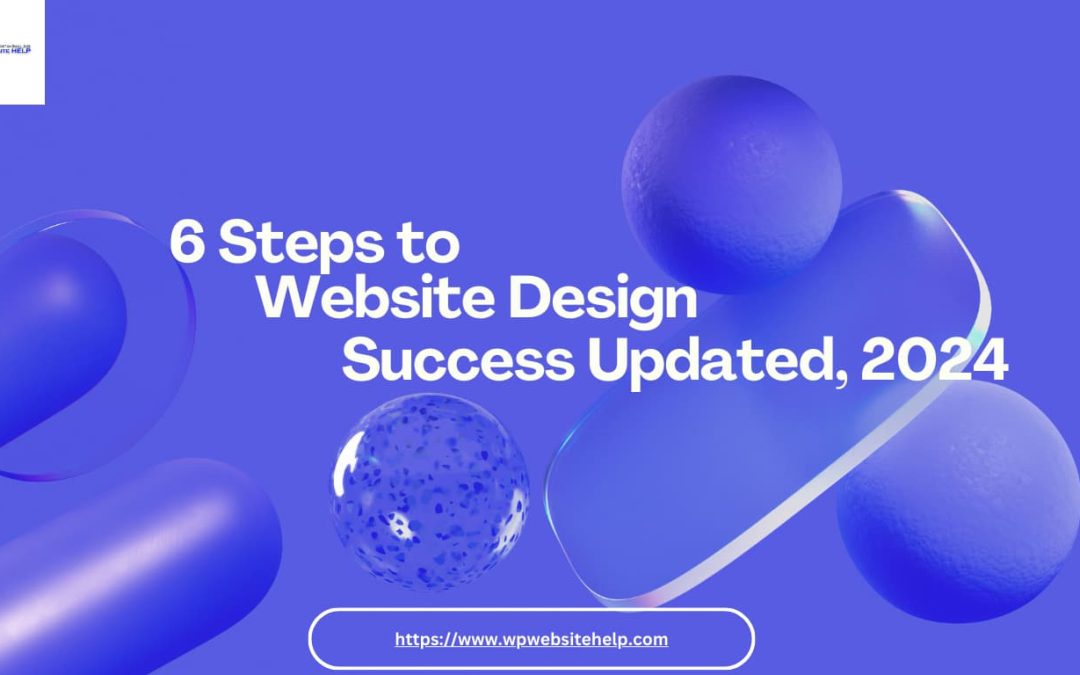“WordPress has made web design almost like walking in the park; all you’ve got to do is launch.”
How true is this statement? Well, that’s a 360° turn right there.
Some web developers prefer to code; besides, launching a website is just one step among the 6 processes in website designing.
Before the launch, there are 4 processes, and after launching, there is; an indefinite one more.
Understanding the processes in website development helps you put up a website that’s highly converting and consistent with your brand message.
In addy, spelling out how you’ll design a client’s website is strategic for eliminating many explanations, and sealing the deal will be a breeze.
Ultimately, adequate planning precedes website design success.
Therefore, website design isn’t walking in the park, nor is it a mystery; it’s an art for mastery, which I’m more than pleased to lead you on.
6 Steps to Website Design Success
In a hurry, these steps, well-implemented, should turn out most website designing projects:
- Research and planning
- Design
- Development
- Testing
- Launch😎
- Maintenance
#1. Research and planning
Cut the grammar; say “pre-design.” Remember, “Ultimately, adequate planning precedes website design success.” – Cool. Here’s how we know a pro designer and amateur – the quality of underground work done to ensure a successful website launch.
It’s boring, but it’s worth every sigh. So, here’s what this process entails:
Identify the goal of the website:
The website should speak the language of the business and sync with the business goals and values.
So, what’s your purpose in designing a website again? Information? Ensure logically written and organized pieces; make sure you state a clear call to action(CTA) with appropriate link to the checkout Page – that’s for a product website.
Hope you grabbed that.
Define your target audience:
Envision your target audience: research, discover, and draw your target audience avatar.
Get to know who they are and what questions they’re asking then, optimize your website to speak their language and soothe their pain points. Stop audience guessing today; stop designing into the wind.
Pro-tip: Don’t forget to research your competitors, it’ll keep you at the edge of the curve.
There’s more to this process, and I would’ve loved to gather all the material, content, and resources for sitemap creation, but space is failing me.
#2. Design
Now, this is more like what you do, web development and design, but it’s steeper than painting your canvas with churning colors. For a chic and sleek design, brace up for tons of trial and error. You must develop content Hierarchy with Wireframe (I won’t digress on that); deliver your best and don’t forget to play with the content. Maybe you fancy content management systems? Then, may I suggest WordPress?
#3. Development
At this point, you’re clear on the goal of the website, the ideal audience, the design, and the necessary materials for the success of the new website. Now, it’s time to code, develop, or customize with WordPress. It’s advised you start with frame design(it is what it is, a frame design not the real thing). Then digress to furnishing and polishing, ensure your website is mobile-optimized.
#4. Testing
This doesn’t take any more than blinking; you’ll like it now. After designing; test all features to ensure optimal functionality to meet readers or client expectations. It won’t hurt a fly spilling some bucks bringing in real-life human application testers. If they’re good for anything, it’s clean feedback. With honest feedback, you’re left with a bit of tush-up here and there, then you’re pimped.
#5. Launch!
Now, this statement: “WordPress made web design almost walking in the park, all you’ve got to do is launch..” is true. All that’s required is just to switch your website to live mode, and you’re live.
Yet, ensure that is going well with the web server; are you operating the right HTML5 or CSS3 or is it something else? Also, make sure your user interface is easy to navigate.
#6. Maintenance (Infinite)
As long your website is live, you’re cursed with maintenance duty. Don’t joke with it. Not sure what that is? Now follow me.
Website maintenance is a lifelong routine, including; on a normal level the following:
- WordPress updates
- Theme and plugin updates
- WordPress backups with a plugin like BackupBuddy
- WordPress Security Plugin, namely iThemes Security Pro
- Analytics tracking and reporting
- WordPress hosting.
Conclusion
Congratulations. Now, you’re clear why this statement “WordPress made web design almost walking in the park, all you’ve got to do is launch..” is a 360° turn.
Always ask yourself, what am I building, who is it for, and how am I gonna achieve it?
Remember, always play with content and sweat to satisfy user experience (UX).
Read Also: What is WordPress
We are dedicated to sharing useful content for WordPress websites in the business & personal communities. This includes any related topics indirectly related to WordPress, marketing, advertising, e-commerce, technology, or any other online subjects we feel would benefit our readers and customers.
Debashrita @ The WP Website Help Team

